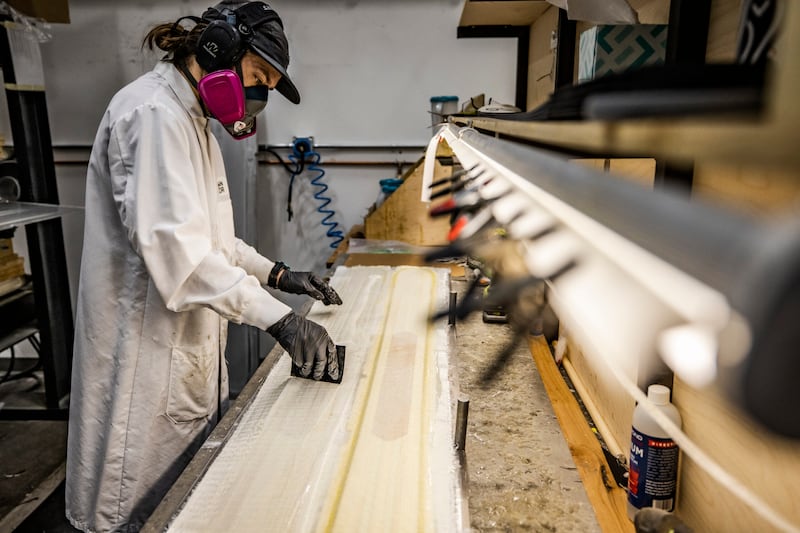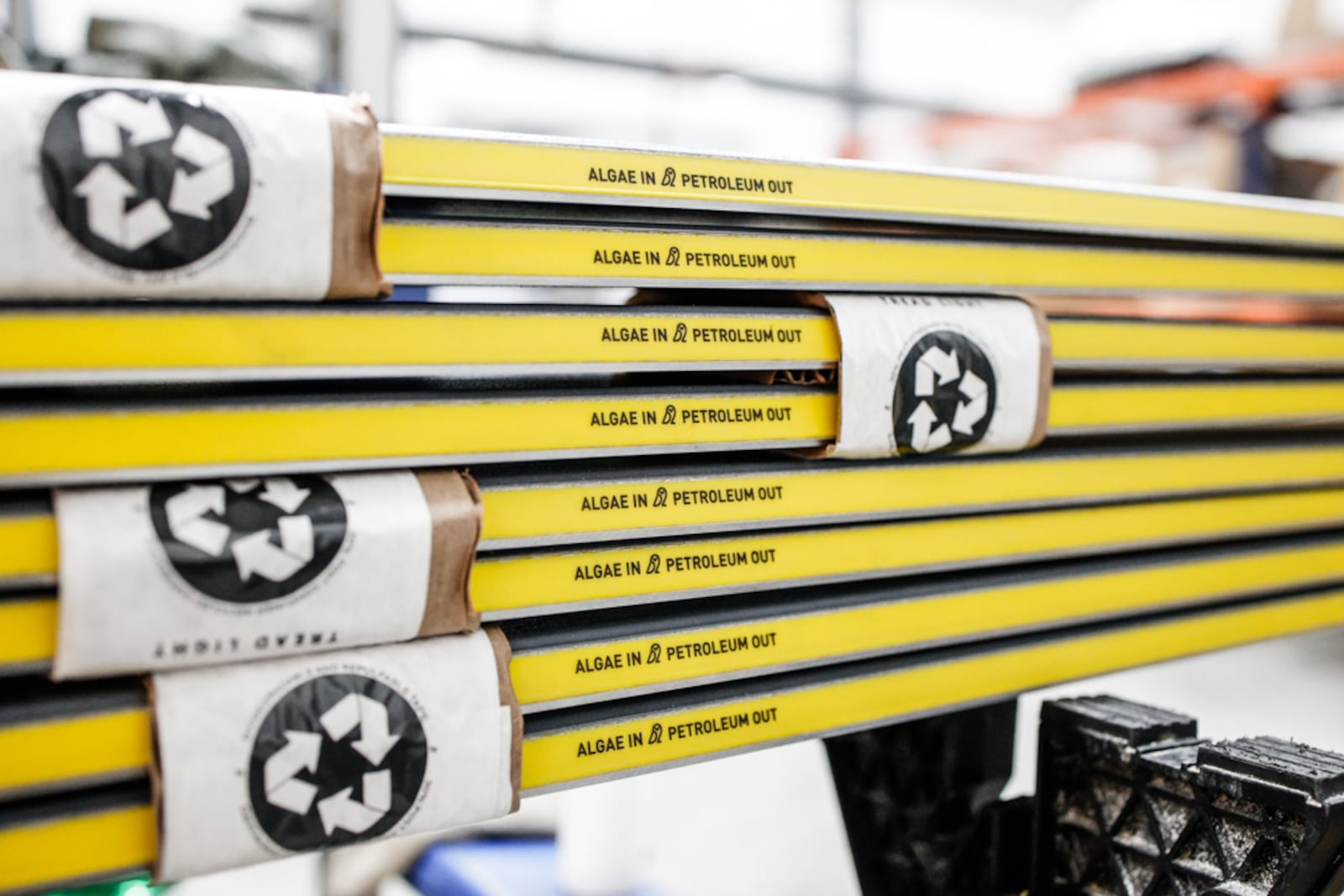This story appears in the February issue of Utah Business. Subscribe.
There’s a quiet but earnest revolution forming on the slopes of the Wasatch Front. Through radical new materials for skis and snowboards, it aims to correct our reliance on petroleum by embracing backcountry sustainability.
The company leading this push is Checkerspot.
Named after the Edith’s checkerspot butterfly, a California species threatened by ecosystem collapse and climate change, Checkerspot develops lab-grown petroleum replacement materials via microalgae. By replacing standard plastics in manufacturing pipelines, Checkerspot offers fresh perspectives on what’s possible for future renewables.
“You’re essentially brewing your own oils rather than extracting them out of the ground,” says Xan Marshland, manager of brand development at Checkerspot. “You can grow those oils in the fermentation tank in a matter of days—typically five to seven days from microorganisms to usable oil. That’s incredibly rapid iteration.”
Iteration is a governing principle at the Checkerspot Design Lab in Salt Lake City, especially for WNDR Alpine, the company’s winter sports equipment brand. The Salt Lake Valley’s proximity to world-class slopes makes testing Checkerspot’s latest materials remarkably efficient. “Say we have an oil,” Marshland says. “We can formulate a prototype material, then make a prototype ski. And from there, you can drive about half an hour to test it in the backcountry.”

Utah’s culture of backcountry adventuring was a huge draw for Checkerspot.
“We have both innovative materials, engineering and a deep-seated passion for winter sports. Our culture and our community—it blends all those things together,” Marshland says. “It’s no surprise that many of these athletes and designers have deep roots within the Utah ski and snowboard community.”
Checkerspot recognizes that taking on petroleum usage is a community effort, and Marshland claims the company’s goal is systemic impact. “We want to work with anybody else in the industry who is making skis and boards to help them take some petroleum out of their supply chain,” he says. “We can’t do this alone. We want to provide as much assistance and motivation for others to do so as well.”
Those industry-wide efforts have led Checkerspot to branch into other fields beyond winter sports. Recent collaborations include HO Sports, a Washington-based water sports company, which opted for Checkerspot’s bio-based foam core for their latest line of water skis.
Another product line Checkerspot promotes is its Pollinator Kit, which allows for highly individualized prototyping. “Whether you’re a small-scale designer or artist, or maybe just a super casual garage tinkerer, and you’re curious about trying out bio-based materials—you have the ability to order one of these kits online,” Marshland says. “It doesn’t matter who you are.”
What does the future look like for the Checkerspot Design Lab? “We’d like to continue our growth here as the home of WNDR Alpine,” Marshland says, “A welcoming place for the backcountry community to come by, pick up some gear, chat with us about biomaterials, take a tour and nerd out with us. In 10-12 years, I hope that this is a place where we’re seeing a higher volume of materials going into bigger supply chains—in the winter sports space and even across the outdoors.”

